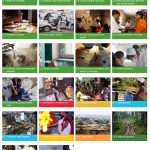Environmental health and population health
Health is a positive state of balance between the expression of biological processes in individuals and populations, and environmental conditions (physical, biological and cultural) in which they take place. On the other hand, disease is the negative situation which stems from the breaking of that balance.
Until the 60s of the 20th century, the western model of health was eminently biologistic, technological and interventionist. In the 70s of the last century a great transformation started, originating with Lalonde in Canada in 1974 and fomented by the World Health Organisation (WHO) during its 30th world assembly (1977) through its “Health for everyone in 2000” programme, whose main aim was of a social nature for governments and WHO itself to achieve equal access for everyone to a level of health “sufficient to develop a productive social and economic life”. From then on, priority was given to primary healthcare in an ecological context with the aim of ensuring equality in health for all members of our species.
In spite of unquestionable advances, the objective was far from attained, such that the third of the SDOs established in 2015 by the UN for 2030 (SDO-2030) is to guarantee a healthy life and promote wellbeing for everyone at all ages.
So that this time progress in health equality between genders, populations and countries is as wished, WHO has made an important effort in its yearly publication on health statistics, linking available data on the health aims and goals set in SDO-2030 with a selection of health indicators for five key areas: a) reproductive, maternal, newborn and infant health; b) infectious diseases; c) non-contagious diseases and mental health; d) injuries and violence; and e) health systems. These areas highlight the need to promote the creation of statistical capacity in each country, because some of the basic figures used are still incomplete or unreliable, especially some of those from rural Africa, where, for example the figures for birth registration are less than 10% in countries like Chad, Ethiopia, Malawi, Tanzania o Somalia.










































